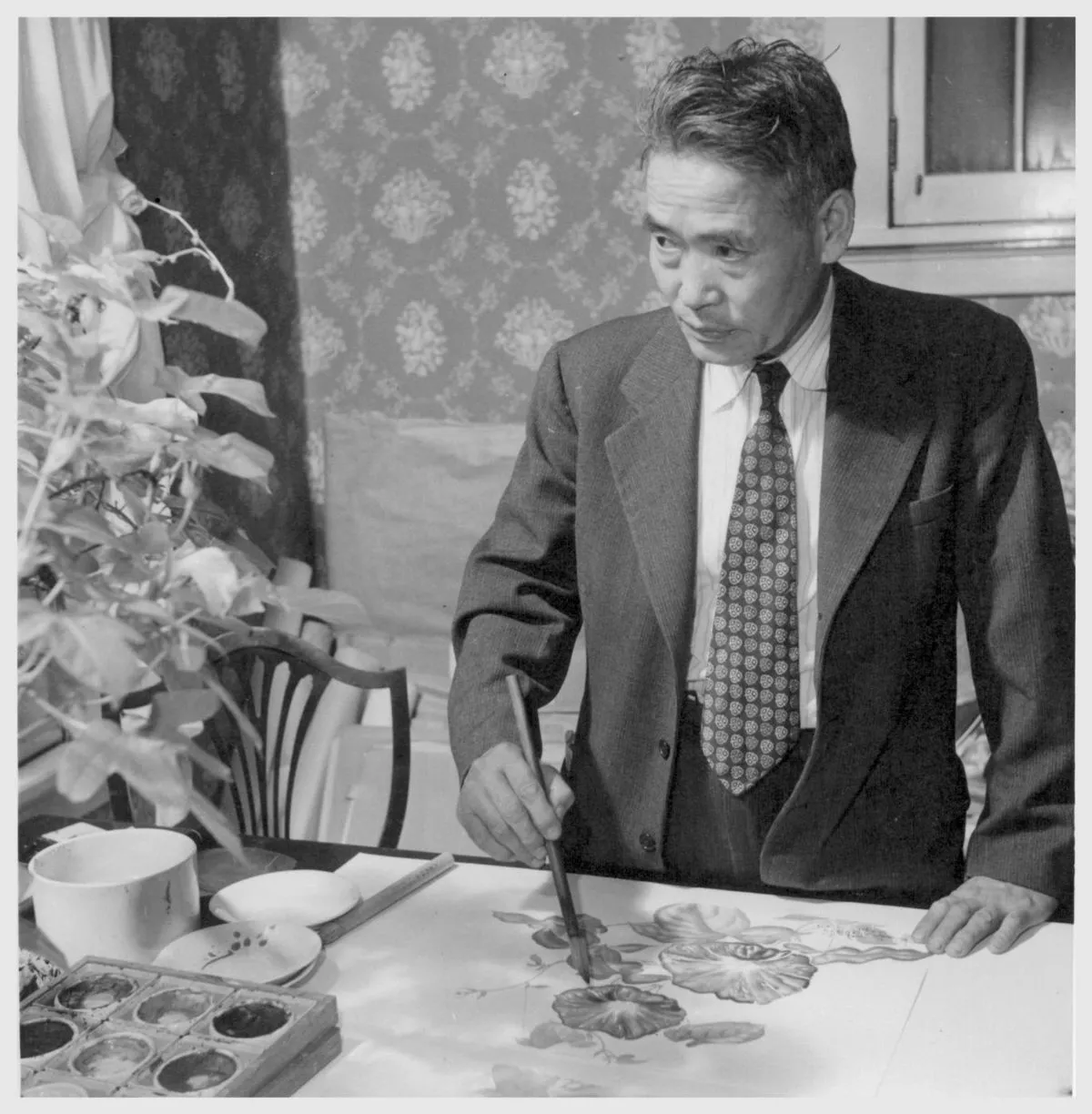 1.
1. Chiura Obata was a well-known Japanese-American artist and popular art teacher.

 1.
1. Chiura Obata was a well-known Japanese-American artist and popular art teacher.
Chiura Obata nevertheless emerged as a leading figure in the Northern California art scene and as an influential educator, teaching at the University of California, Berkeley, for nearly twenty years and acting as founding director of the art school at the Topaz internment camp.
Chiura Obata was born in 1885 in Okayama prefecture in Japan.
Chiura Obata was the youngest of a very large family.
Chiura Obata was then adopted by his older brother, Rokuichi, who was himself an artist and moved to Sendai, Miyagi prefecture.
At the age of 14, Chiura Obata ran away from home to avoid being put into military school.
Chiura Obata was trained in Western as well as modern Japanese art with a focus on Japanese sumi ink-and-brush painting, painting throughout his life in the eclectic style.
Chiura Obata arrived in Seattle, where he planned to study American art before continuing to Paris to study European art.
Chiura Obata was one of the founders of the Fuji Club, the first Japanese-American baseball team on the American mainland.
In 1906, Chiura Obata made on-site sketches of the aftermath of the San Francisco earthquake.
Chiura Obata made five large murals for the Toyo Kisen Kaisha Steamship Company and for the Iwata Dry Goods Company.
From 1915 to 1917 Chiura Obata was an illustrator and cover page designer for the magazine Japan, published for the Toyo Kisen Kaisha Steamship Co.
The first exhibition Chiura Obata had for American audiences was in the following year, 1928.
In 1928, after his father's death, Chiura Obata returned to Japan.
In 1932 Chiura Obata was appointed as an instructor in the Art Department at the University of California, Berkeley.
Executive Order 9066 led to Chiura Obata organizing a large sale of his many paintings and woodblock prints.
In September 1942, Chiura Obata was moved to the Topaz War Relocation Center in Topaz, Utah.
Chiura Obata, who had been deemed 'loyal' and granted the privileges of leaving camp to teach classes at nearby universities and churches, was assaulted one night leaving the showers by a fellow inmate who considered him a spy.
Chiura Obata moved with his family to St Louis, Missouri, where Gyo, one of his sons, was going to architecture school.
When Chiura Obata painted New Moon Over Topaz, Utah, he was a prisoner at the camp: one of 120,000 Japanese Americans to be incarcerated during World War II.
In 1945, when the military exclusion ban was lifted, Chiura Obata was reinstated as an instructor at UC Berkeley.
Chiura Obata played a pivotal role in introducing Japanese art techniques and aesthetics to other artists in California.
From 1955 to 1970, Chiura Obata traveled throughout California, giving lectures and demonstrations on Japanese brush painting, and leading tours.
Chiura Obata was one of the first teachers of ikebana in the San Francisco Bay Area.
Chiura Obata had an exhibition of her arrangements in 1913 at San Francisco's 75th Diamond Jubilee Celebration, and in 1915 she exhibited at the Panama Pacific Exposition, beginning a career as a teacher of that art.
Chiura Obata's granddaughter Kim Kodani Hill is a family archivist, historian, and author of two books on her grandfather.